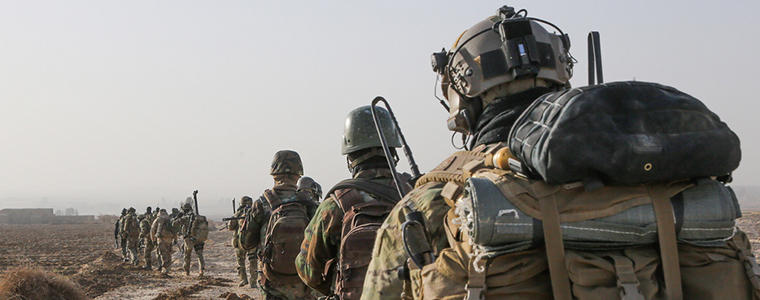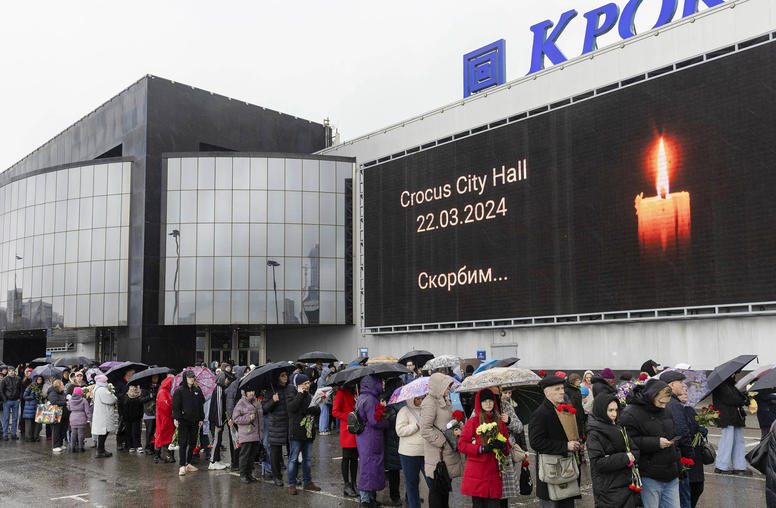America the Gentle Giant
How the United States can shape the world without boots on the ground and bombs in the air.
Vladimir Putin's cynical efforts to annex Crimea and intimidate the fledgling government of Ukraine make it all too clear that naked aggression in world affairs is not a thing of the past. The United States and its allies must respond firmly when such aggression occurs. But there are other perhaps less dramatic instances of resorting to force of arms. These include unresolved disputes between states -- or ethnic, tribal, and religious disputes within states -- that degenerate into armed conflict.

In many instances these conflicts can be prevented, and there is every reason to try to do so. First, violent conflict has cascading security, political, and economic consequences in addition to offending universal values of justice and human dignity. Second, in most circumstances the use of military force alone provides no easy or attractive solutions. The United States, our allies and friends, and international institutions should therefore invest in equally effective means of preventing conflict, whether used in concert with or in lieu of force. These tools are necessary now. Trends such as the diffusion of global power, the rise of non-state actors, and the spread of potent technologies will only increase their relevance.
A strong national defense is essential to peace. But the use of force is costly, in both lives and dollars, and it is not appropriate to every task. When our nation does use force, as it did in Iraq and Afghanistan, the gains won by our troops are often best sustained using non-military means. Few things honor the sacrifice of our troops more than protecting what they fought for, and, wherever possible, keeping them out of war in the first place.
We urge the president, his administration, and the U.S. Congress to prioritize non-military efforts of conflict prevention, mitigation, and resolution. Done well, such efforts can avert or reduce the need to use force while advancing U.S. interests in ways that are both potent and cost effective. They can help other countries resolve conflicts through politics and the rule of law rather than through violence, which devastates lives and livelihoods, and empowers extremists and criminals. They can help non-violent citizen movements address the drivers of conflict -- such as corruption and the violation of minority rights -- in their own societies.
Successful models do exist to manage conflict without violence and our nation should do more to support them.
The use of national dialogues, now being tried across the Arab world, has shown recent promise. To date, Tunisia is the clearest example of success, having peacefully transitioned from an elected Islamist-led government to a non-political technocratic government as the result of an inclusive national dialogue led by Tunisian civil society. We need to see this model applied elsewhere and determine whether outsiders can and should provide support.
Similarly, the 2013 presidential election in Kenya, a center of economic growth and a partner in the fight against extremist groups like Al Shabaab, might be a model. This election generally proceeded peacefully, despite violence during the previous election in 2007 that left more than 1,000 dead and 350,000 displaced. Kenyans, backed by an international coalition of governments, international organizations, and NGOs, engineered a massive "peaceful election" campaign that featured broad-based nonviolent coalitions that included religious figures, women, youth, and business leaders, among others. With key elections coming up in Afghanistan, Nigeria, and Burma, we must see how to apply these methods to prevent electoral violence in these places.
Local efforts to contain rising extremism in Nigeria, a country with huge potential to become either the engine of Africa's future or a major exporter of violence and instability, have proven their ability to stanch radicalization. Mothers -- the ultimate front line of defense -- are learning to prevent extremism in their own homes and communities, and thereby prevent their children from falling prey to terrorist groups. We must invest in such locally-driven alternatives to violence so we can avoid the expensive military operations otherwise needed to fight a new generation of terrorists.
Consider efforts to digitize property records in Syria. We know from previous conflicts that violence can re-emerge when people displaced from their homes return to find them occupied and their ownership contested. And in Syria we know that extremists are actively seeking to destroy property records. For a relatively small cost, those records can be digitized by Syrian NGOs and stored outside the country, preventing new rounds of violence over property rights. If something this simple prevents lost lives, the approach is worth expanding, even as we consider more ambitious efforts to stop the horrendous levels of ongoing violence in Syria.
Non-violent efforts at conflict prevention, mitigation, and resolution require not only greater support, but also a distinctive approach.
First, they require empowering others, particularly those in conflict zones, who can build the capacity to manage conflicts without sustained U.S. engagement. The goal is to help others help themselves, not to make the United States central to others' conflicts or to involve us indefinitely in foreign wars.
Second, they require deep knowledge of conflict zones plus expertise in how to prevent and mitigate conflicts. These are specialized skills that must be cultivated over a period of years, the same way we train our military forces well before they are needed.
Third, they require innovation and commitment to understand better what works and what doesn't in promoting peace. Peacebuilding must employ the same rigor that is now beginning to be applied in fields like global health -- and we need the self-discipline to abandon what is not working.
Fourth, they require public-private partnership and a willingness of government to support and act in concert with networks of businesses, nonprofit organizations, foundations, and universities -- especially those based in conflict zones. Peacebuilding must be a team sport.
Fifth, they require a sustained commitment of attention and resources. Complex conflicts rarely end quickly but a combination of politics, budget cycles, and the personnel policies of U.S. government agencies complicate efforts to take the long view. But a long-term, sustainable approach is precisely what these challenges require.
Finally, they require embracing exciting new tools for understanding and managing conflicts. Ushahidi, a Kenyan-based non-profit software company, developed crisis mapping tools widely used in Kenya during the last presidential election that are now embraced by groups ranging from the United Nations to the U.S. Defense Department. Advances in big data, combined with the rapid spread of cheap mobile technologies, are opening major new opportunities in peacebuilding. The United States should take the lead in developing and disseminating these new tools.
It is time to apply the same level of commitment and innovation to preventing, mitigating, and resolving armed conflict as we do to fighting wars. These are essential national security capabilities and enhancing them will save lives, conserve tax dollars, and reinforce America's image as a global force for peace. But we need to act now.
Reposted with permission from ForeignPolicy.com, Source: “America the Gentle Giant"


